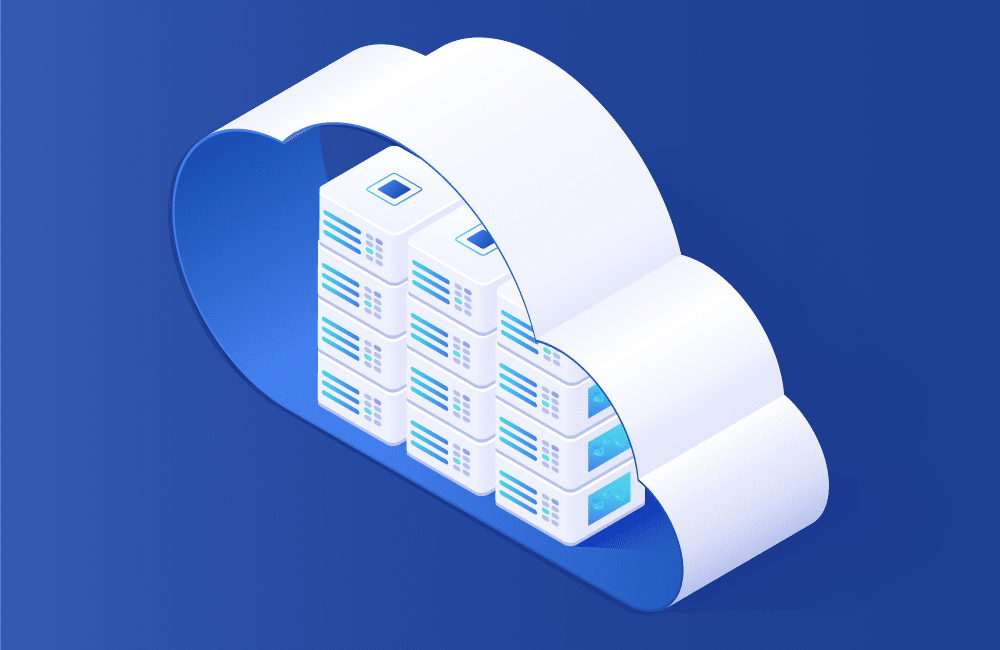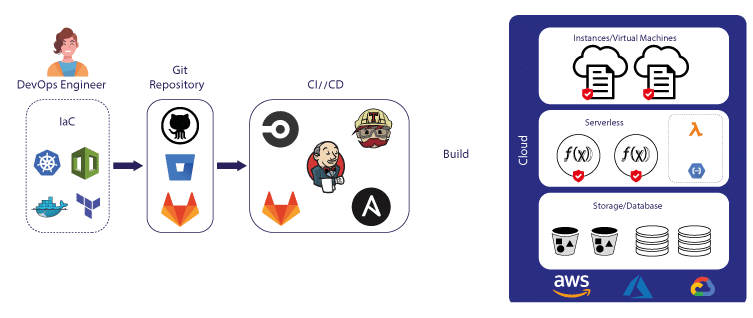Infrastructure as Code: Enabling DevOps Success


Infrastructure as code (IaC) promises to make developers more agile, but it’s not without risk. Learn more about what IaC is, its benefits, and best practices for how to use this technology securely.
What Is Infrastructure as Code?
As applications move to cloud environments and organizations rely more heavily on cloud service providers, provisioning infrastructure has shifted from the IT team to developer and DevOps teams. Infrastructure as code (IaC) introduces a code-first approach that supports building and terminating cloud infrastructure components via cloud specification templates.
In essence, IaC is the managing and provisioning of computer data centers through machine-readable files, rather than manually configuring physical hardware or using interactive configuration tools. IaC uses code to automate the management and provisioning of servers, storage, databases, networks, logs, and more to save time and money by removing manual configuration, which carries the risk of human error.
As developers continue to push applications into production faster than ever, IaC enables teams to efficiently automate environment provisioning — at the speed required to get business done.

Infrastructure as Code Benefits
IaC promises a number of benefits, including the following:
- More efficient development – IaC enables developers to focus on what they do best: write code. IaC makes provisioning more reliable, which means developers can focus more on building applications than on configuring production environments. The reusability of IaC gives developers the ability to script once and use that code multiple times, achieving great economies of scale, not to mention saving time.
- Speed and consistency – By eliminating manual processes, IaC reduces the amount of time it takes to configure cloud environments. Admins can iterate quickly, consistently, and more frequently by automating the configuration function. Developers no longer need to worry about admin availability and tasks being completed on time as changes can be easily implemented globally.
- Decreased costs – Managing storage, networking, middleware, hardware, and more in a data center takes a lot of time and resources. The automation and scalability of IaC reduces the need for multiple admin roles, decreasing overall costs and freeing admins to work on the next greatest technology coming down the pike.
- Minimized risk – IaC allows your cloud infrastructure to be configured consistently across different environments and allows you to document, track, and log your server configurations. Human error is minimized, and any issues can be easily pinpointed and corrected, which helps reduce your overall risk.
- Single source of truth – IaC provides an auditable, single source of truth for your infrastructure by defining and documenting your configuration settings in a single set of centralized files. It is much more difficult to audit and detect configuration issues when they are done individually and manually.
Infrastructure as Code Security
While IaC boosts efficiency overall, it can also amplify mistakes. By moving so quickly, a minor error by a DevOps admin at the template level can be propagated across an organization’s entire cloud infrastructure. For this reason, IaC security must be implemented to reduce cloud security risk.
IaC security solutions vary from traditional appsec testing tools to managing policies and IaC templates. Because developers far outnumber security professionals, security needs to be shifted left to as early in the development life cycle as possible.
Developers need an IaC security solution that allows them to consistently apply security best practices across the SDLC to reduce potential security misconfigurations and vulnerabilities from being deployed to production environments.
IaC security should also encompass who is and who is not allowed to run scripts as well as limiting the permissions of IaC users. The principle of least privilege, in which users are given the absolute minimum levels of access required to perform their job functions, applies here and is an important part of IaC.
Infrastructure as Code Tools
There are a number of IaC tools on the market that help you manage cloud resources. Some are specific to a cloud platform provider:
Others are cloud-agnostic and support IaC in almost any environment. Tools in this category include Ansible, Chef, and Terraform.
IaC tools allow you to write infrastructure as code using declarative configuration files. Not only do these tools automate the provisioning of cloud environments, but the scripts allow the process to be reproduced and repeated while also serving as documentation for how your infrastructure is configured.
Infrastructure as Code Best Practices
Deploying an IaC tool is the first step toward streamlining your deployment workflows. To ensure the success of your implementation, the following best practices can help:
- Track versions of IaC definitions – Storing IaC files in a version control system allows you to keep track of how your IaC definitions have changed over time. Plus you can revert back to earlier versions if necessary.
- Adopt an immutable infrastructure – IaC is more reliable when IaC templates are used to create new resources from scratch whenever a major update is required. This minimizes the risk of creating configuration conflicts or experiencing configuration drift.
- Continuously test, integrate, and deploy – In the end, IaC is code, and like any code, it should be continuously tested to surface errors and inconsistencies before being deployed to production.
- Avoid IaC security risks – In order to configure resources, IaC tools need access to passwords and encryption keys. Don’t include these secrets in IaC definitions where they can be easily read. Best practice is to store sensitive data inside a secrets manager, so that it is secure and accessed by IaC tools only when needed.
Infrastructure as Code and DevOps Success
The promise of IaC is in its ability to standardize all cloud configuration processes to maximize efficiency and minimize costs. Automation of infrastructure is now a major requirement for all organizations. As modern applications move more and more to the cloud, IaC will take on even greater importance.
When selecting an IaC tool, always keep security top of mind. Look for solutions that help organizations secure IaC templates and check for security issues, compliance violations, and other misconfigurations. The best solutions are those that allow developers to detect, track, and fix the misconfigurations as part of their normal workflow without leaving their code repositories to view results or set up a separate workflow to scan. A solution that puts security first gives security admins the confidence they need in IaC built and operated by DevOps.

